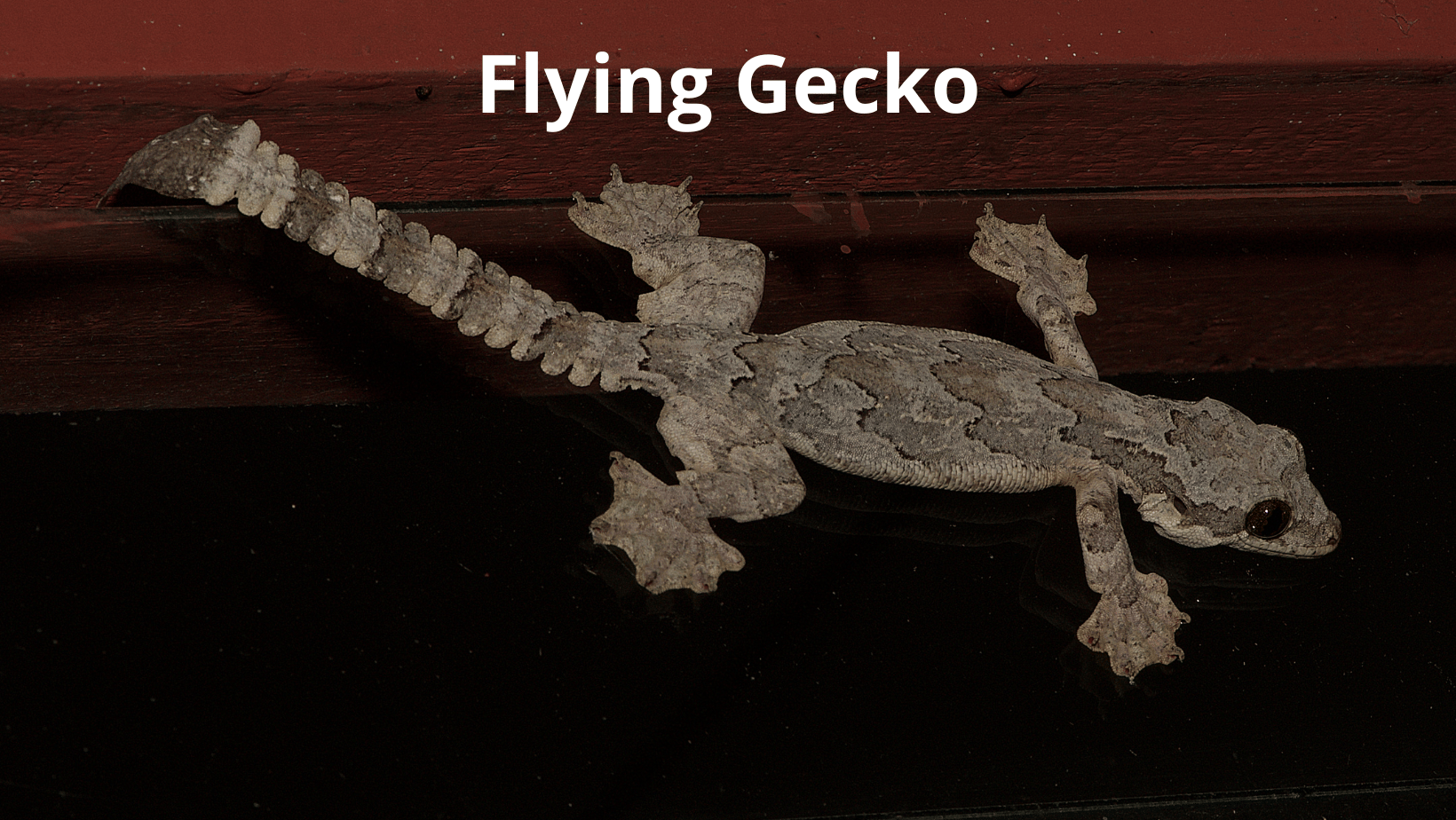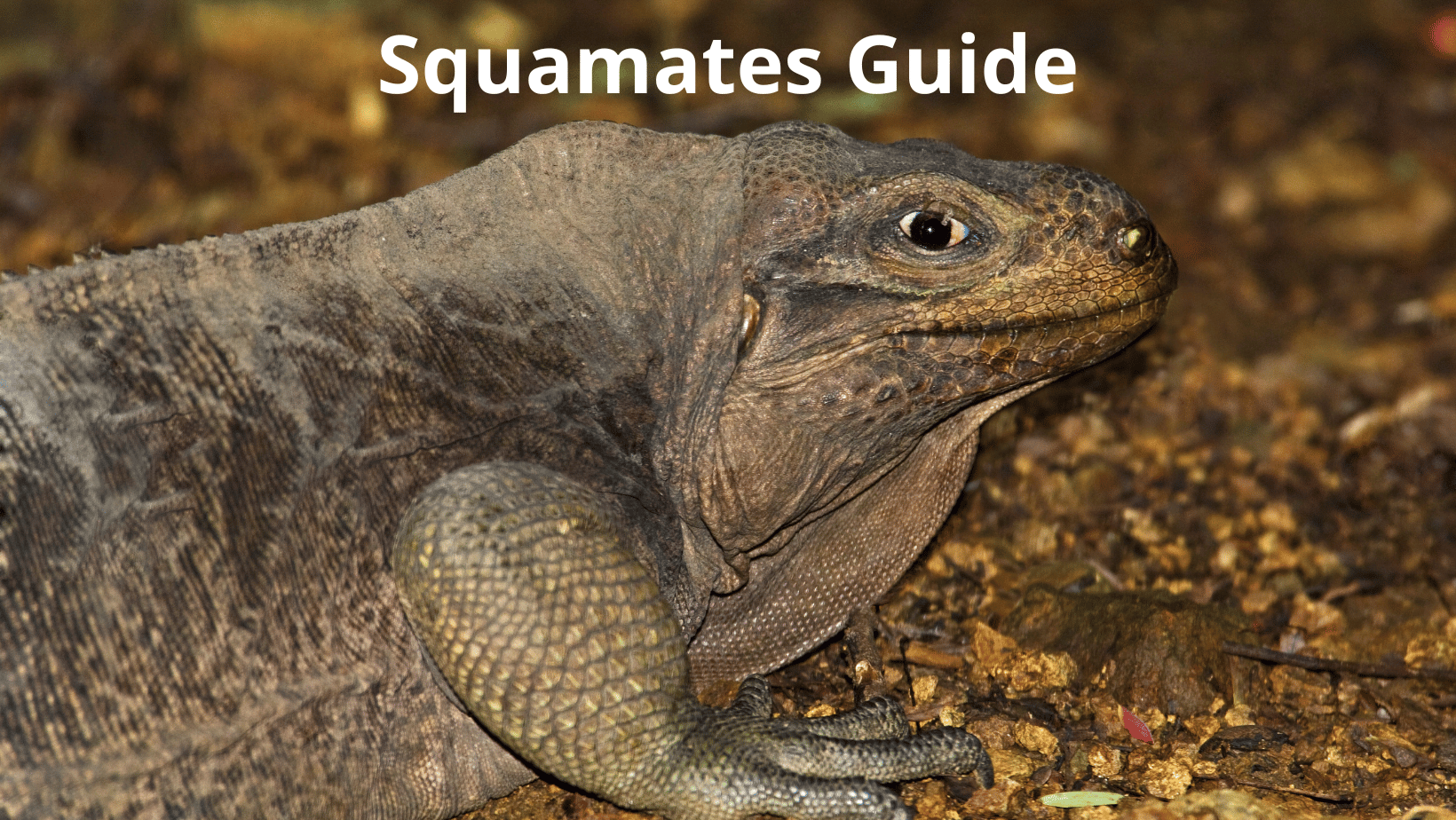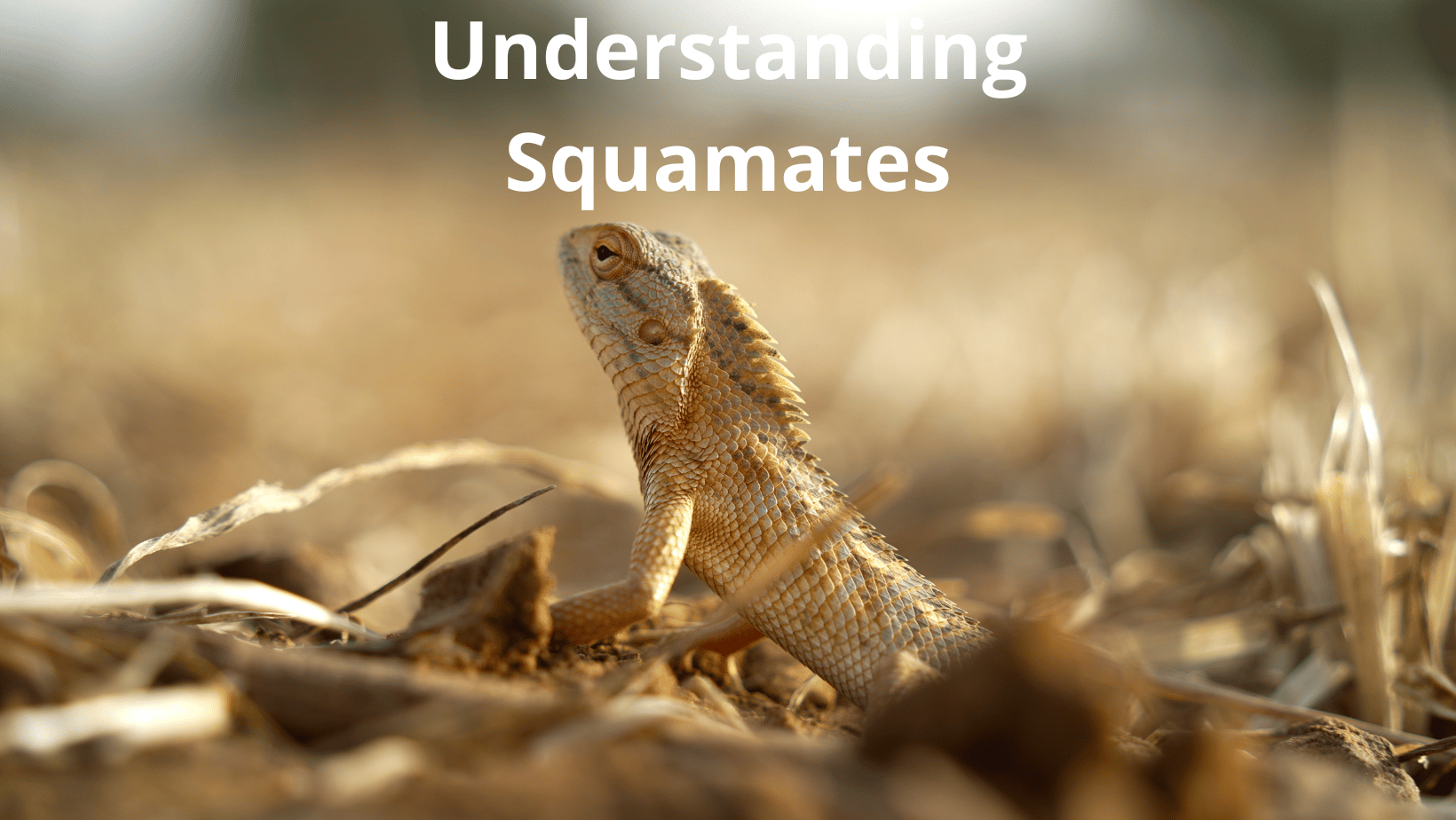The Flying Gecko, is a reptile which hails from the once standalone genus Ptychozoon but now classified under Gekko, embodies nature’s endless marvels.
Notably, it isn’t the ability to fly, but rather to glide, that sets these geckos apart. Their specialized body structures, cryptic coloration, and the fascinating evolutionary history behind their gliding abilities beckon us to explore more about them.
Whether you’re a nature enthusiast, a potential pet owner, or simply curious, come along as we unfold the secrets of these gliding wonders.
Nestled amidst the sprawling greenery of Southeast Asian rainforests, the Flying Geckos are nature’s testimony to the power of adaptation and evolution.
These fascinating reptiles, despite lacking wings, have mastered the art of gliding, earning their moniker.
As we journey through their world, we’ll delve into their origin, marvel at their unique adaptations, and understand the vital role they play within their ecosystem.
Origin and Evolutionary History
Flying Geckos, originally classified under the genus Ptychozoon, trace their lineage back to the larger Gekkonidae family.
This gecko family, primarily centered in Southeast Asia, has an evolutionary history deeply entrenched in the region’s biodiversity.
Over time, as these geckos ventured into Southeast Asian rainforests, they began to evolve, adapting to the challenges of a three-dimensional forest environment.
This adaptation led to the birth of the Ptychozoon lineage, which became nature’s prime example of how terrestrial animals can evolve to exploit the aerial niche.
Adaptations for Gliding
At first glance, Flying Geckos appear to be wearing capes, thanks to the intricate webs and flaps encircling their neck, limbs, trunk, and tail.

These are not mere decorations; they’re essential tools that enable the geckos to glide and control their fall.
The broader skin flaps serve a dual purpose: they not only aid in generating lift when the gecko takes a leap but also help camouflage the creature against trees, blending seamlessly into the bark.
Remarkably, these geckos can glide up to 200 feet, mastering a swooping motion towards the end to ensure a soft landing.
Such specialization mirrors a few other species like the Cosymbotus genus geckos, but the proficiency and elegance of the Flying Geckos are unmatched.
Importance in Ecosystem
Like many creatures, Flying Geckos play a pivotal role in maintaining the balance of their ecosystem. Their cryptic coloration not only aids in gliding but also in hunting.
Being voracious insectivores, they help in regulating insect populations within their habitat, thus maintaining a check on potential pest species.
Furthermore, they serve as a food source for larger predators, ensuring the flow of energy through the food chain. In essence, they contribute to the overall health and functioning of the rainforest.
Their presence and activities, though often subtle and unnoticed, are indicative of a healthy, thriving ecosystem, proving that even the smallest creatures can have a significant impact on the environment they inhabit.
General Care Guide for Flying Geckos
Flying Geckos, with their mesmerizing aerial maneuvers and cryptic appearances, have garnered interest among reptile enthusiasts worldwide.
However, replicating their natural Southeast Asian rainforest environment is crucial for their wellbeing in captivity.
This guide offers insights into the various aspects of care that these geckos require, ensuring they live healthily and comfortably when they grace our homes.
Cage Specifications
The enclosure for a Flying Gecko should ideally mirror its natural habitat, giving it ample space to move, climb, and glide.
For a pair, a minimum of a 10-gallon aquarium (measuring 20 inches in length, 11 inches in width, and 13 inches in height) is recommended. However, a taller cage is always preferable over a shallow one, imitating the vertical spaces they’re used to in the wild.
Single geckos can manage in smaller enclosures, but a more spacious environment often reduces stress, providing them with an arena closer to their natural surroundings.
Decoration and Substrate
A terrarium style setup, complete with clean soil, tropical house plants, and wooden pieces, is ideal for Flying Geckos.
Sturdy plant species such as Philodendron and Pothos not only add to the aesthetics but also provide them with the cover they’re used to, aiding in their acclimatization to captivity.
It’s been observed that this species tends to adapt more quickly when surrounded by abundant plant cover.
Besides plants, shelters like empty coconut shells, flower pots, or driftwood, especially when positioned against the back wall of the enclosure, offer them private retreats away from prying eyes.
Temperature and Humidity Control
Flying Geckos thrive best in temperatures ranging between 82-88°F during the day, with nighttime temperatures dipping to the mid to high 70s°F.
Short exposures to temperatures above 88°F might be tolerable, but prolonged exposure can induce stress.
As forest dwellers, high humidity is crucial for their wellbeing. To maintain optimal moisture levels, daily misting and a sizable water bowl are recommended. Live plants and soil-based terrariums also contribute to maintaining appropriate humidity.
But balance is the key! While humidity is essential, proper ventilation is equally critical. Overly humid conditions coupled with inadequate ventilation can jeopardize their health.
Lighting Requirements
Despite being nocturnal and not typically basking in sunlight, good lighting is essential for a Flying Gecko’s environment, particularly to sustain the live plants in the terrarium.
A consistent light schedule, varying seasonally between 8 to 14 hours of daylight, should be maintained.
The light not only fosters plant growth but also helps regulate the gecko’s circadian rhythm, ensuring they remain active and healthy.
Diet and Nutrition
A Flying Gecko’s diet is predominantly insectivorous. They feast on a variety of insects, including crickets, mealworms, wax worms, and flies.
However, some might occasionally consume small pink mice or tiny lizards. It’s imperative to supplement their diet with calcium, especially during breeding seasons.
Calcium should be provided during all feeding sessions, either dusted onto the food or placed in a dish.
This ensures strong bone development and overall vitality, particularly for breeding females.
Breeding Practices
Breeding is primarily influenced by lighting and temperature conditions. Breeding usually commences when daylight exceeds 12 hours, and temperatures hover at the higher end of their comfort range, typically starting around April.
Female Flying Geckos lay clutches of 2 eggs approximately every 3-4 weeks during the summer, possibly resulting in 5 or 6 clutches.
With the right environment and a nourished female, breeding can potentially continue throughout the year.
Unlike some reptiles, these geckos glue their eggs to surfaces, usually the glass walls of the terrarium.
It’s advisable to let the eggs incubate in their chosen spot. Under standard terrarium conditions, they hatch in around three months, although this can vary based on temperature and humidity.
Species Spotlight: A Look into the Different Types of Flying Geckos
Flying Geckos have dazzled reptile enthusiasts with their spectacular gliding abilities and remarkable camouflage.
Delving deeper into the realm of these airborne wonders, we uncover the diversity that lies within the genus.
With thirteen known species, each variant brings its own uniqueness to the table. In this segment, we’ll spotlight some of these geckos, exploring the distinct characteristics and habitats of each type.
Ptychozoon bannaense – Banna Parachute Gecko
Hailing from the vibrant ecosystems of Southeast Asia, the Banna Parachute Gecko possesses distinctive coloration that aids in its masterful camouflage.
Its patterns not only contribute to its stealth but also emphasize the beauty that this species exudes.
While it shares many general traits with its cousins, its specific habitat preferences remain a topic of interest for researchers.
Ptychozoon cicakterbang – Malaysia Parachute Gecko
Endemic to Malaysia, this gecko stands out with its slightly more pronounced webbing and tail structure.
Researchers and enthusiasts alike are drawn to its intriguing behavior, which subtly varies from its counterparts.
Its choice of habitat within the Malaysian forests, often residing higher up in the canopy, adds another layer of fascination to its existence.
Ptychozoon horsfieldii – Horsfield’s Parachute Gecko
Named in honor of Thomas Horsfield, an American naturalist, this species has garnered significant attention due to its wider distribution range.
With a subtle blend of browns and greens, Horsfield’s Parachute Gecko excels in merging seamlessly into its surroundings, making it a master of disguise.
Ptychozoon intermedium – Intermediate Flying Gecko
As the name suggests, the Intermediate Flying Gecko exhibits characteristics that sit between some of its relatives.
This species, native to the Philippines, showcases an interesting mix of features, which has made it a subject of numerous studies aimed at understanding the evolutionary path of flying geckos.
Ptychozoon kabkaebin – Lao Parachute Gecko
Distinct to the lush forests of Laos, this species sports a marginally smaller build compared to its cousins.
The Lao Parachute Gecko is often found in denser, more humid parts of the forest, making its adaptations slightly different and all the more intriguing.
Ptychozoon kaengkrachanense – Kaeng Krachan Parachute Gecko
This species, named after the Kaeng Krachan region, boasts slightly more elongated limbs and a unique pattern that distinguishes it from others.
Its habitat, primarily the dense and vibrant forests of the Kaeng Krachan region, has shaped its behavior and physical characteristics.
Ptychozoon kuhli – Kuhl’s Parachute Gecko
Celebrated for its striking appearance and the pronounced fringes on its limbs, Kuhl’s Parachute Gecko is a favorite among many enthusiasts.
This species exhibits some of the most vivid behaviors, especially during its gliding displays.
Ptychozoon lionotum – Smooth-backed Gliding Gecko
Contrary to the rough, camouflaged textures of its peers, the Smooth-backed Gliding Gecko has a relatively smoother skin.
Found mainly in Myanmar, this species offers a refreshing contrast with its streamlined appearance.
Ptychozoon nicobarensis – Nicobar Gliding Gecko
From the picturesque islands of Nicobar, this gecko brings the essence of island life.
With a slightly more aquatic tendency and an affinity for coastal trees, it adds an exciting twist to the flying gecko family.
Ptychozoon popaense – Mt. Popa Parachute Gecko
Named after the iconic Mt. Popa, this species resides in the mountain’s unique ecosystems.
The altitude and distinct flora have shaped the Mt. Popa Parachute Gecko’s behaviors and dietary preferences.
Ptychozoon rhacophorus – Sabah Flying Gecko
Sabah, known for its biodiversity, gives us this magnificent gecko.
With slightly brighter coloration and an active nature, the Sabah Flying Gecko is a delight to observe, especially during its nocturnal escapades.
Ptychozoon tokehos – Cambodian Parachute Gecko
Cambodia’s lush forests are home to this species, with its striking patterns and vibrant hues.
The Cambodian Parachute Gecko is often observed in the denser undergrowths, taking full advantage of its camouflage.
Ptychozoon trinotaterra
While not as extensively studied as some of its counterparts, Ptychozoon trinotaterra holds its own with a unique set of behaviors and adaptations.
Its habitat and other specifics remain areas of interest, offering vast potential for future research and understanding.
Summary
The world of flying geckos is vast and layered with intricacies. Each species, with its distinct quirks and behaviors, contributes to the rich tapestry of biodiversity.
For enthusiasts, these geckos offer a chance to dive deep into a realm of wonder, unraveling mysteries with each observation.
For the casual observer, they serve as a vivid testament to the enchantments of the natural world.
As we wrap up our journey, it’s essential to carry forward the awe and reverence these creatures inspire, fostering a spirit of curiosity and conservation for generations to come.


